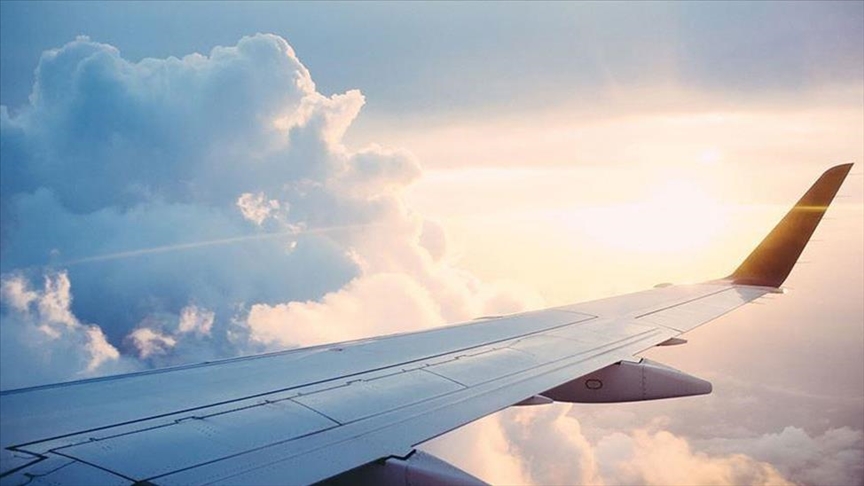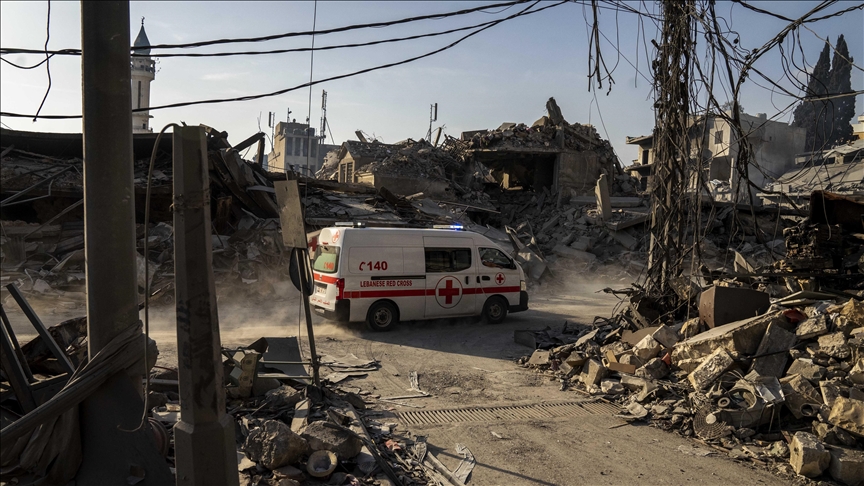Climate change and aircraft turbulence: Is there a link?
– ‘We can expect more turbulence events in the future as our global weather patterns are changing and increasing the threat,’ Doug tells Anadolu
– Future climate projections show clear-air turbulence is likely to increase in frequency and intensity over several Northern Hemisphere regions, says University of Reading researcher Mohamed Foudad
ISTANBUL
As the skies get bumpier, many are pointing fingers at a familiar culprit: climate change.
The very real dangers of turbulence were seen just last week in the case of a Singapore Airlines flight, which ended up in damage, injuries and even death.
Flight SQ321, a Boeing 777-300ER, was heading from London to Singapore on May 21 when it encountered severe turbulence, plunging 54 meters (178 feet) in a matter of five seconds.
Dozens among the 211 passengers and 18 crew members were injured, while a 73-year-old British man died of a suspected heart attack.
Just days later, 12 people on a Qatar Airways flight from Doha to Dublin were injured due to turbulence.
For aviation experts and researchers, the increasing intensity and frequency of these jarring events is linked to climate change and the science is there to back it.
Global warming and clear-air turbulence
While investigations continue into the recent incidents, experts say what the planes encountered was clear-air turbulence (CAT), which occurs in cloudless regions and causes violent buffeting of aircraft.
“Clear-air turbulence is wind shear turbulence related to fast moving streams of air that may collide, creating swirls of disturbed air,” Doug Drury, a professor and head of aviation at Australia’s Central Queensland University, told Anadolu.
“As the name implies, it is clear and therefore not seen by pilots … CAT can last for some time before it dissipates.”
Another academic, Damian Devlin, explained that this specific type of turbulence typically occurs at higher altitudes, usually above 15,000 feet, particularly between the core of a jet stream and the surrounding air.
Unlike turbulence caused by thunderstorms, low-altitude temperature inversions, thermals, strong surface winds, or local terrain features, CAT tends not to be visible to the pilots, satellite, or radar, he added.
Building on this, Mohamed Foudad, a postdoctoral researcher in turbulence modelling at the University of Reading, said while it is not possible at this stage to determine the specific type of turbulence that happened with these two recent flights, “both incidents occurred near the subtropical jet stream, which creates favorable conditions for clear-air turbulence.”
Research from the University of Reading published last year found that “clear-air turbulence … has increased in various regions around the world.”
It said “at a typical point over the North Atlantic – one of the world’s busiest flight routes – the total annual duration of severe turbulence increased by 55%, from 17.7 hours in 1979 to 27.4 hours in 2020.”
The study explicitly linked the increase to climate change, saying “the increases are consistent” with its effects.
“Warmer air from CO2 emissions is increasing wind shear in the jet streams, strengthening clear-air turbulence in the North Atlantic and globally,” read the study.
Foudad, who worked on separate research on past and future trends in CAT over the Northern Hemisphere, told Anadolu: “We already found an increase in CAT frequency in recent decades over several regions (for example East Asia and Middle East), where the two airlines (Singapore and Qatar) experienced turbulence, which is attributable to climate change.
“Future climate projections show that over several Northern Hemisphere regions, CAT is projected to increase in frequency and intensity. This is mainly due to a large increase in vertical wind shear related to the subtropical jet strengthening, which is due in turn to the increase of the meridional temperature gradient between the tropics and the high latitudes in upper atmosphere.”
Aviation expert Drury also believes that climate change is “making CAT worse.”
“As the surface temperatures increase, this means more heated air rising into the atmosphere, which comes into contact with much cooler air, thereby creating the atmospheric conflict that creates the CAT,” he explained.
“Additionally, the climate is changing, and we are having stronger and more frequent storms that create their own turbulence.”
Delvin, a PhD researcher at the University of West London, said that while it seems “intuitive and reasonable to perceive a relationship between climate change and turbulence, establishing the exact nature of this connection is challenging due to limited availability and quality of data.”
“However, the authors of the study conducted at the University of Reading are confident that the doubling of carbon dioxide concentration in the atmosphere has already increased and will continue to increase jet stream wind shear, and consequently, jet stream turbulence,” he said.
Should we expect more such incidents?
Experts believe cases of aircraft experiencing extreme CAT will continue to spike.
“We can expect more turbulence events in the future as our global weather patterns are changing and increasing the threat of storms and CAT in certain areas around the globe,” said Drury.
Devlin, meanwhile, cited the University of Reading study’s finding that an increase in the severity of CAT will make such incidents more common, if not more extreme.
When considering the projected doubling of air passengers by 2040, the likelihood of more passenger flights encountering CAT also increases, he added.
Climate researcher Leon Simons said the rising amount of heat in the atmosphere will continue to bring about more extreme weather, including heat waves and heavy rains, as well as increased turbulence.
“The atmosphere is now heating up four times as fast as it did between 1960 and 2000. As more heat accumulates in the atmosphere, we need to prepare for more turbulence,” he warned.
Detection and safety
Within the aviation industry, work is already underway on measures to detect CAT and somehow counter its effects.
According to Drury, the technology is in the research phase and will be used in the future.
“Based on current conditions and known weather patterns, meteorology teams around the globe can predict where potential areas of high probability should be avoided,” he said.
However, he pointed out that it would “add time and costs potentially to our ticket prices if we have to fly hundreds of kilometers out of our way to avoid them.”
Academic Devlin said increasing awareness and understanding of the issue will inevitably push the aviation sector to seek out solutions and enhance safety, such as adjusting their in-flight service routines.
However, he also emphasized that 2023 was the safest year ever for commercial aviation, despite the increasing incidents of severe turbulence.
“On average, a passenger would have to fly daily for over 125,000 years to encounter a fatal incident,” he said, adding that the industry knows just how much is at stake so it has to work on safety and ways to “mitigate the risks.”
For now, the most useful tip that most experts have is for passengers to stay buckled in.
“The most effective measure a passenger can take to avoid injury during turbulence, as it is with every aspect of their flight, is to follow the crew’s instructions and wear their seatbelts when seated,” said Devlin.
Anadolu Agency website contains only a portion of the news stories offered to subscribers in the AA News Broadcasting System (HAS), and in summarized form. Please contact us for subscription options.




